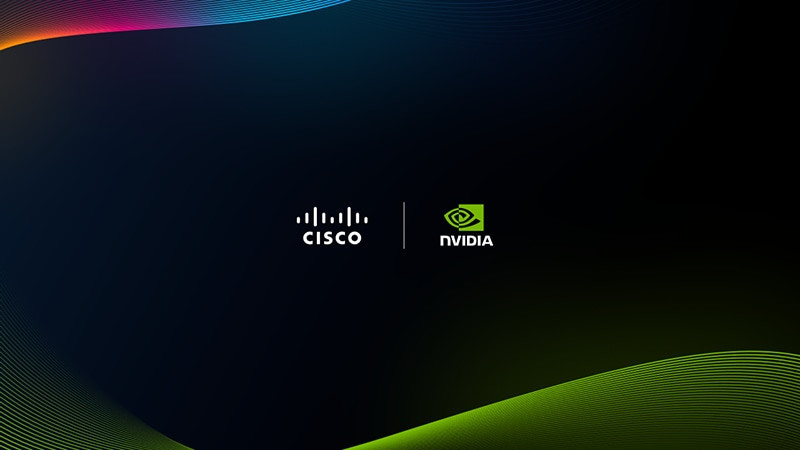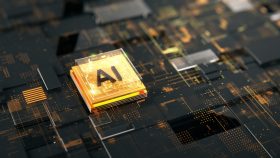China Has Banned NVIDIA. Did Anybody Notice?

A Chinese ban on NVIDIA (NVDA) chips seems to have flown a little bit under the radar. The Cyberspace Administration of China (CAC) has banned the use of NVIDIA chips, indicating that that the PRC is confident that domestic products can advance its AI competition with the U.S.
This could be another "DeepSeek moment"—indicating Chinese competition in the AI market is heating up. But investors haven't paid much attention, with the Nasdaq having this week hit new highs and NVIDIA shares hovering near all-time highs (NVIDIA shares did fall about 3% today, though the news broke days ago).
As first revealed in the Financial Times, the CAC told companies such as ByteDance and Alibaba last week to stop testing and ordering NVIDIA’s RTX Pro 6000D chips. These are different from the higher-end H20 chips, which the Chinese government had been discouraging domestic customers to adopt prior to the blanket NVIDIA ban.
The ruling came as China’s hyperscalers and leading tech supplier Huawei have been making progress in creating AI compute chips of their own. Alibaba, for instance, has deployed its own chips since 2019. Baidu too has its own chips, which the company boasts can train models such as those from DeepSeek.
Huawei Boasts Breakthroughs
News of the CAC’s NVIDIA ban was followed last week by Huawei’s unveiling of its AI accelerator roadmap, along with the TaiShan 950 SuperPoD, a multi-chip system designed for both general-purpose computing as well as AI. Due for release during the first quarter of 2026, the SuperPoD relies on a new UnifiedBus interconnect technology, which will enable multiple SuperPoDs to act as a single computer. The idea is that if Huawei can’t yet beat NVIDIA in the power of its chips, it can beat them with sheer numbers of Hauwei’s alternative components all working together.
All of which puts Huawei in a good position relative to NVIDIA, according to Eric Xu, Huawei’s Rotating Chairman, who said the following in a keynote address at Huawei’s Connect 2025 conference in Shanghai last week:
“NVIDIA plans to launch their NVL144 system in the latter half of 2026. Our Atlas 950 SuperPoD will have 56.8 times more NPUs [neural processing units] than they've got GPUs, and will deliver 6.7 times more computing power. Our SuperPoD will have 15 times more memory capacity, reaching 1,152 TB, and 16.3 PB/s interconnect bandwidth – 62 times higher than its counterpart. And even if we compare it against the NVL576 system, which NVIDIA plans to launch in 2027, it's clear that our Atlas 950 SuperPoD will still be ahead on all fronts.”
Closing the AI Gap
Xu’s boast is loud and clear: China doesn’t need NVIDIA. And apparently NVIDIA CEO Jensen Huang has reached some reluctant acceptance. According to the FT, he told reporters in the UK last week:
“We can only be in service of a market if the country wants us to be. I’m disappointed with what I see. But they have larger agendas to work out, between China and the US, and I’m understanding of that. We are patient about it.”
Even as China ramps its AI chip development efforts, it’s not clear that the country will be able to easily manufacture its designs. As Bloomberg notes, AMD and NVIDIA have the benefit of what Huang calls “the magic that is TSMC.” In contrast, China has struggled with manufacturing chips at scale, which will have to happen if the PRC is to pull ahead of the U.S. in AI.
Still, the DeepSeek revelation proved that China’s technologists are aggressive and resourceful, and they are motivated by a government that is uncompromising in pursuing its goals. And one of those is to win the so-called New Cold War of AI against the U.S.
Meanwhile, though, the U.S. is pursuing AI developments with its own determination. Enormous investments in datacenters, billions spent to boost startups, pledges by NVIDIA to finance OpenAI and by Oracle to boost that company's efforts via Stargate, all point to a juggernaut of American effort toward AI. And that effort also has the full backing of the U.S. government.
One question remaining is whether CAC has also banned the use of AMD chips in the PRC. We’ve reached out to AMD and will keep you posted.
Futuriom Take: China is thumbing its nose at the U.S. with its ban on NVIDIA chips, but manufacturing could prove to be a major obstacle. Still, the strength of China’s technological determination can’t be overestimated.





















